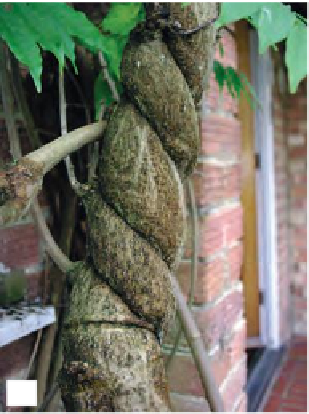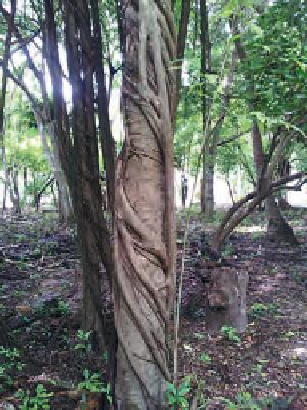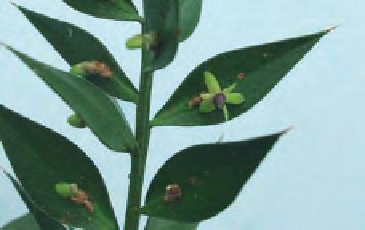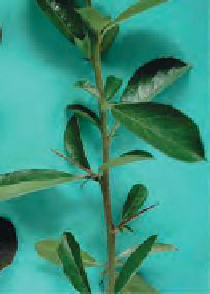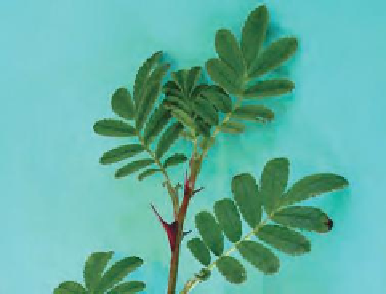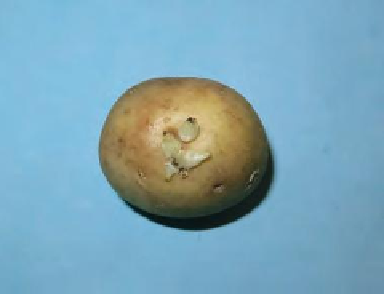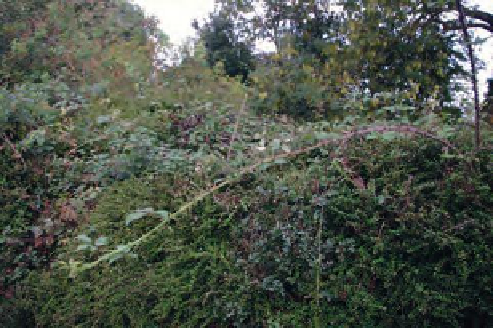Agriculture Reference
In-Depth Information
(a)
(b)
(c)
(e)
(d)
(f)
Figure 7.15
Some stem adaptations: (a) twining
stems of a mature
Wisteriasinensis
; (b) Strangler
fi g (
Ficus
spp.) uses a tree for support which it may
eventually kill, leaving a hollow core; (c) cladodes of
butcher's broom; (d) thorn of
Pyracantha
; (e)
prickles
on the stem of
Rosa sericea
subsp.
omeiensis
f.
pteracantha,
grown as an ornamental for its large red
thorns; (f) stem tuber of potato
solanum tuberosum
with new shoots growing from buds on the stem; (g)
stolon of bramble
Rubus fruticosus
7
(g)
usually underneath and sometimes just above the
ground. Nodes and internodes can be seen clearly
along the stem together with adventitious roots
which anchor it in the soil and take up water and
mineral nutrients. As the stem branches, new
rhizomes are formed from lateral buds, each with a
shoot at its tip. This eventually enables the plant to
spread. Rhizomes are found in many
Iris
spp. such
as
I. germanica
and its cvs., including the bearded
Iris
in Figure 7.16.
Corms
, found in
Gladiolus,
Crocosmia
and
Crocus
for example, are compressed
underground shoots in which the stem is swollen
with starch (Figure 7.18). They have dry scale leaves
on their outer surface underneath which nodes,
internodes and axillary buds can be seen. Each year
a new corm forms on top of the old one. As well
as small adventitious roots, rhizomes and corms
have specialized, thickened contractile roots which
help to pull them to an appropriate level in the soil.
Stem tubers
are typified by
Solanum tuberosum
(potato) (Figure 7.15f). The tubers of potato can be
distinguished from root tubers by having vestigial
nodes and axillary buds (the 'eyes') which grow into
shoots. They also turn green (and poisonous) on

